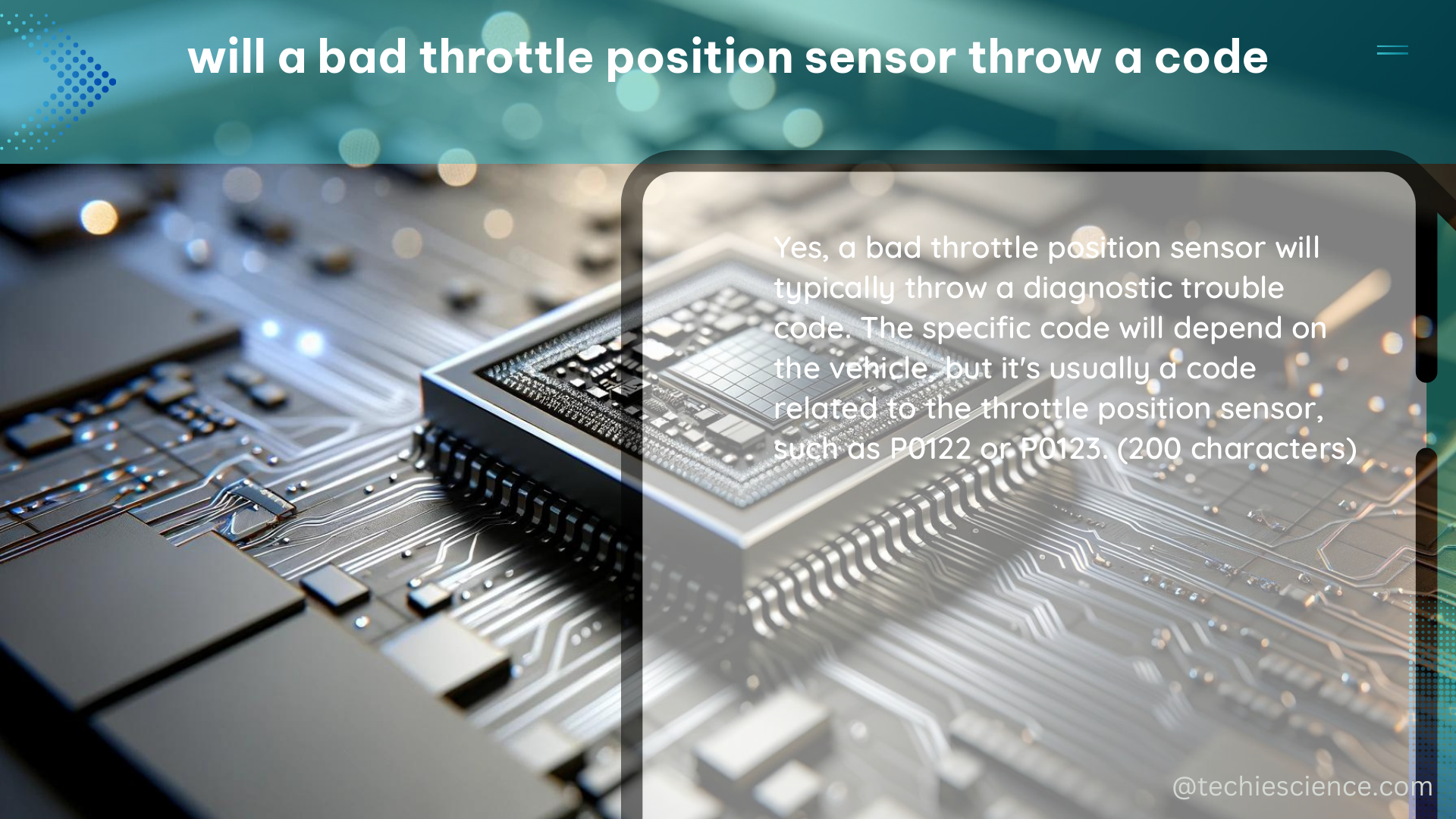A bad throttle position sensor (TPS) may or may not throw a diagnostic trouble code (DTC), but it can certainly cause various performance issues in a vehicle. The TPS is a critical component that measures the position of the throttle blade, and a faulty sensor can lead to problems with engine and transmission operation.
Understanding the Throttle Position Sensor
The throttle position sensor is a potentiometer that changes resistance (and therefore, voltage) in response to the movement of the throttle shaft. This voltage signal is used by the engine control module (ECM) to determine the position of the throttle blade and adjust the air/fuel mixture and ignition timing accordingly.
In modern vehicles, the TPS is typically a three-wire sensor with the following connections:
- Signal Wire: Carries the variable voltage signal to the ECM.
- Ground Wire: Provides a reference ground for the sensor.
- Power Wire: Supplies the sensor with a constant voltage, usually 5 volts.
The TPS voltage should increase as the throttle blade opens and decrease as it closes. A faulty TPS can cause the voltage signal to be out of the expected range, leading to various drivability issues.
Symptoms of a Bad Throttle Position Sensor

When the throttle position sensor is malfunctioning, it can cause the following symptoms:
- Check Engine Light Illumination: The ECM will detect an issue with the TPS and set a diagnostic trouble code, causing the check engine light to illuminate on the dashboard.
- Rough Idling: The engine may idle roughly or stall due to the ECM’s inability to properly control the air/fuel mixture.
- Hesitation or Lack of Power: The engine may hesitate or feel underpowered during acceleration due to the ECM’s incorrect interpretation of the throttle position.
- Transmission Issues: In vehicles with automatic transmissions, a faulty TPS can cause the transmission to shift erratically or remain in a lower gear, leading to poor fuel economy and performance.
- Limp Mode Activation: If the ECM detects a severe TPS issue, it may put the vehicle into a “limp mode” to protect the engine, severely limiting the vehicle’s performance.
Diagnosing a Throttle Position Sensor Issue
To diagnose a potential throttle position sensor problem, you can follow these steps:
- Check for Diagnostic Trouble Codes: Use a scan tool or code reader to check for any DTCs related to the throttle position sensor. Common codes include P0120, P0121, P0122, and P0123.
- Perform a Visual Inspection: Inspect the TPS and its wiring for any signs of damage, such as loose connections, frayed wires, or corrosion.
- Test the TPS with a Multimeter: Use a digital multimeter (DMM) to measure the voltage at the TPS connector while manually moving the throttle blade. The voltage should increase as the throttle opens and decrease as it closes. If the voltage is out of the expected range or does not change, the TPS may be faulty.
When testing the TPS with a DMM, keep the following specifications in mind:
- Voltage Range: Typically, the TPS voltage should range from around 0.5 volts (throttle closed) to 4.5 volts (throttle fully open).
- Voltage Change: The voltage should change linearly as the throttle is opened and closed, with a smooth transition.
- Resistance Change: The resistance of the TPS should also change linearly as the throttle is moved, typically from around 1 kΩ (closed) to 5 kΩ (open).
If the TPS is found to be faulty, it will need to be replaced to restore proper engine and transmission performance.
Conclusion
In summary, a bad throttle position sensor may or may not throw a diagnostic trouble code, but it can certainly cause a variety of drivability issues in a vehicle. By understanding the symptoms of a faulty TPS and following the proper diagnostic steps, you can identify and address the problem to keep your vehicle running smoothly.
References:
- Jeep Forum – Will a Bad/Malfunctioning TPS Always Throw a Code?
- CarParts.com – Bad Throttle Position Sensor Symptoms: What You Need to Know
- LS1Tech – Throttle Body Causing Throttle Position Sensor Code

The lambdageeks.com Core SME Team is a group of experienced subject matter experts from diverse scientific and technical fields including Physics, Chemistry, Technology,Electronics & Electrical Engineering, Automotive, Mechanical Engineering. Our team collaborates to create high-quality, well-researched articles on a wide range of science and technology topics for the lambdageeks.com website.
All Our Senior SME are having more than 7 Years of experience in the respective fields . They are either Working Industry Professionals or assocaited With different Universities. Refer Our Authors Page to get to know About our Core SMEs.